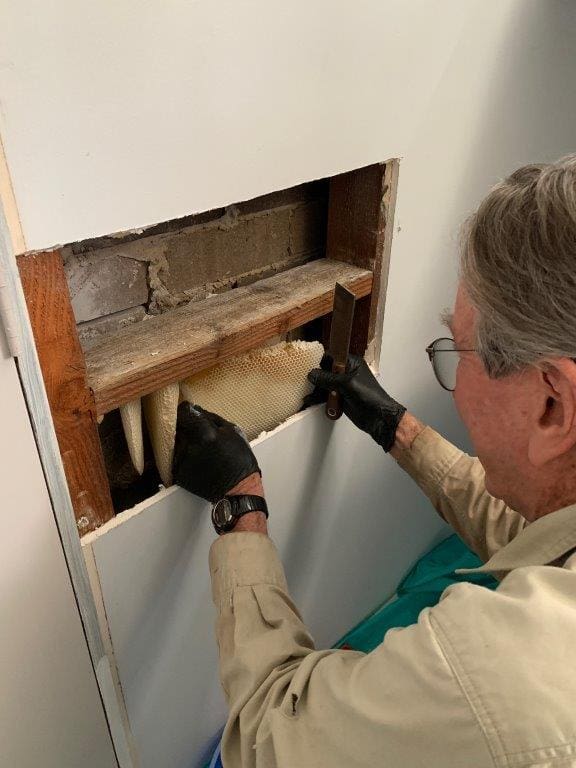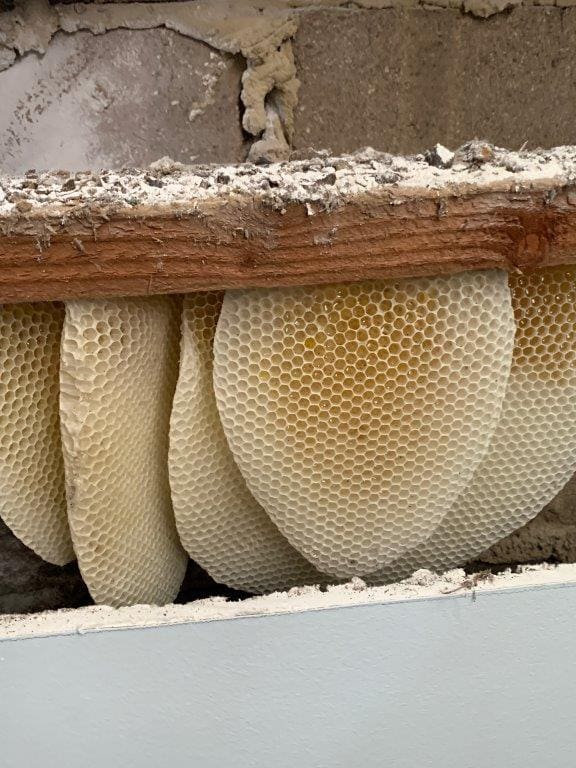Bees
Bees are a necesary pollinator, occasionally feral bees become a pest to us in our homes
Bees
At Pestgo, we love bees as they are very beneficial to us as humans and for our environment. So wherever possible, we’d prefer not to kill them.
Unfortunately though, they are sometimes attracted to our homes as a safe place to set up a hive. And once established, bees can cause significant damage, not to mention painful stings!
Unlike wasps, bees are rarely aggressive in nature and are actually less likely to sting. A bee can only sting once and dies after stinging as the stinger is barbed which causes it to be pulled from the bee’s body.
Swarm or established colony?
Bees swarming in a cluster around a tree branch is a natural occurrence that happens when a queen bee and several thousand workers leave the nest in search of a new home. They will usually keep to themselves if undisturbed and move on within a few days.
Many amateur beekeepers will collect swarms in their local area as a community service. The Amateur Beekeepers Association NSW has a service where you can search for beekeepers that will collect swarms. Click here to find a local beekeeper.
Important Update Since the incursion of Varoa mite into Australia there are now tight restrictions on moving bees around. Many Apiarists are now not relocating hives.
If you see a lot of bees entering and leaving a hole in your wall or ceiling, you may already have an established colony hidden inside the cavity area of your house. Bees are extremely productive and fast workers which means the longer those bees have been present the larger their hive is likely to be.
The most common areas we might find a beehive in the home are wall cavities, roof voids, chimneys, and anywhere else a cavity exists. A beehive inside can cause several issues, including:
Paint blistering and discolouring from the heat of the hive
Reduced wall cavity ventilation due to the hive blocking vents
Bulging and swelling of gyproc due to pressure from nesting material
Increased ant and cockroach activity due to the honey being a food source
Treatment
Treatment for bees is not complicated but depending upon the access that is available to the area of infestation, the treatment can be difficult and sometimes quite dangerous due to the equipment needed to access heights and the potential for bee stings.
The most common treatment includes the application of a low toxic pesticide powder into the cavity that the bees are infesting. The powder is blown in under air pressure to distribute it to the far reaches of the cavity and to affect as many bees as possible. If the cavity is easy to access and the powder is able to flow well through it, destruction of the colony will happen rapidly.
If the colony has been there for some time, there may be honeycomb, honey or bee larvae inside the cavity.
That material if not removed may result in attracting Rodents, Cockroaches, ants or even other bees which can detect the leftover honey.
A key point to remember is the longer the bees are there, the larger the colony hidden inside the cavity will become. So if you think you might have a beehive in your home, call us and we’ll talk you through what steps to take.
You can help to reduce bee infestations by:
Sealing cracks and crevices around the perimeter of the home
Installing Weepa Weep Hole Screens

Bees resting on a tree branch in Camden

Bee honeycomb being removed after treatment of bees in a house

Honeycomb must be removed to avoid issues with other pests like ants, cockroaches and rodents


